Home economics is a curriculum domain that has been highly responsive to social pressures concerning gender, especially the expected roles that girls and women should occupy in families, the labour market and society more broadly. It is a curriculum domain that came into being towards the end of the nineteenth century as an educational response to several interdependent crises and social movements that included the following:
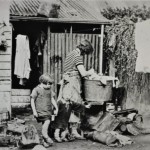
Fig 1: Slums of Melbourne, 1930s. What Home Economics training might do! State Library of Victoria.
(1) Child-saving
There were philanthropic organisations, often run by middle class women, that sought to “save” children of the depressed working-class areas of the cities (popularly referred to as “slums”.) This could lead to child removal into institutions, the establishment of kindergartens, or advocacy of school curricula that might improve family life and child-rearing.
(2) Domestic servant shortage
With the rise of factories in urban areas many women were unwilling to become domestic servants. The wages for work in factories may have been basic, but the hours of work and personal freedom experienced were superior. Some middle- and upper-class women advocated school training in home economics as a means of producing young women who would willingly work as domestic servants.

Fig 2: Learning to keep a clean home, a clean bathroom of crucial importance. Burwood Girls Domestic Science School, 1930. State Library of New South Wales.
(3) Health problems among working class youth.
As young Australian men were recruited for service in the Boer War, and later World War I, recruiting officers were often shocked by the low levels of fitness, cleanliness and health of recruits. The demand for improved working-class families grew. It would include the training of girls (as future wives and mothers) in cleanliness, nutrition and child-rearing.
(4) Eugenics movement.
Partly arising from newly racialised social sciences and new approaches to social administration, the improvement of populations became an object of the eugenics movement. A eugenics goal common in Australia was to improve the environmental circumstances of families at risk (for example, through slum clearance). Schools could be engaged. This might include the training of girls in cleanliness, hygiene, nutritious cooking and improved mothering. Eugenics advocacy supported those who argued that “race suicide” was a problem in the late nineteenth and early twentieth centuries. White women needed to meet their responsibilities to the nation, Empire and the [white] race by having healthier, and more [white] babies.
(5) First wave feminism
Feminists at the beginning of the twentieth century sought to dignify the labour and status of women. Home economics was seen as one way of moving towards this goal. It was generally accepted that most women should work as wives and mothers in homes. Educating women through the emerging home economics curriculum was commonly promoted as a feminist cause.
Foundations, to the 1900s
The belief that girls should experience a different school curriculum from that of boys stretched to the beginnings of the British occupation of Australia. If girls were schooled at all, there were domestic skills to be encouraged, particularly that of plain sewing (needlework). In several convict era institutions in New South Wales, such as the Female School of Industry and the Female Orphan School, not only were girls trained in the skills required for domestic service, but their moral reformation was sought, in part through the discipline required for their training.
From England also came the “accomplishments curriculum” for upper class girls. Fancy sewing and embroidery might be part of that education, but in early colonial Australia, a more practical education that enabled satisfactory housekeeping and keeping a family clothed was more common than attention to the “higher” accomplishments.
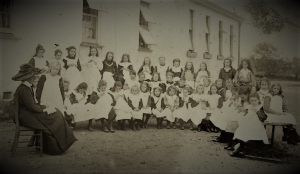
Fig 3: A sewing class at McLaren Vale Public School, South Australia, 1910. State Library of South Australia
In the 1870s in most of the Australian colonies compulsory schooling was introduced. Girls and boys in the elementary (later primary) schools experienced a common curriculum, with two exceptions. Girls might be taught sewing (from 1872 in Western Australia, for example) while boys might be taught drill or woodwork. In New South Wales, the central significance of needlework for girls was consolidated with the appointment in 1890 of a Directoress of Needlework, tasked with reporting on the efficacy of instruction across the public schools in metropolitan Sydney. In 1896 she reported that the curriculum taught girls to “embellish their homes; it inculcates habits of neatness and industry; it adds to the comfort of domestic life … a boon to the community at large.” (Quoted in Kyle, p. 47)
A 1901 South Australian report on public schooling outlined a curriculum for needlework. Within the statement is a criticism of the fancy trimmings likely to appeal to women and girls of “lower” social rank. Needlework had a social improvement purpose.
The children [girls] in all classes are to be prepared to fix their own work … Plain garments are preferred. The use of cheap trimmings of inferior quality should especially be discouraged. (Board of Education, The system of education in South Australia, London, 1901, p. 515)
Where women teachers were not available to teach sewing, the wives of male teachers in the smaller schools were often employed. Before the 1890s there was little sense that fully employed teachers might specialise in teaching the domestic skills, including needlework.
Cookery as a subject of instruction also had a nineteenth century history but, in Sydney for example, it developed slowly. In 1890 an Instructress in Cookery, Annie Fawcett Story, was recruited into the Education Department. She had taught domestic economy at the Sydney Technical College in the 1880s. She went on to an appointment as Directoress of Cookery in Victoria from 1898, having a major influence on the emergence of home economics as a viable curriculum for girls and young women in both colonies. By 1910 in New South Wales there were 52 cookery schools. The intention was that every girl in the fifth public school class would attend a cookery class one day per week for three months. From this time, and for several decades, “domestic science” might replace natural science (physics and other subjects) as the science subject girls would study, leaving non-domestic science (for example, physics and chemistry) to the boys.
While the inter-related five movements introduced above: child-saving, domestic servant crisis, health crisis, eugenics and first wave feminism had their origins in the nineteenth century, their coalition as a force for school curriculum reform came late. The demand for reform that might improve families and the population in general is part of the history of progressive education, or, as it was usually referred to in the British Empire, the New Education.
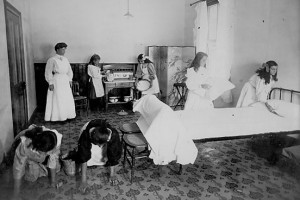
Fig 4: Learning to tidy and clean bedrooms, 1902-1904. Household Management Centre, Western Australia. State Library of Western Australia
The belief that the girls who would become wives and then mothers had the principal responsibility for tidying up working class families, often portrayed as vicious, unhealthy and dirty, lasted a long time.
In the United States, as in Australia, there was a racial dimension to the introduction of home economics. Girls from African American families were disproportionately enrolled in the subject. This also occurred in Australia, especially in the institutions that received Aboriginal children who were separated from their parents, stolen or otherwise. In Western Australia early in the twentieth century many institutionalised Aboriginal girls were sent to domestic servant training homes where elements of the home economics curriculum were adapted for girls’ planned domestic service employment futures.
It was not until around 1900 that a curriculum, originating in attention to the skills required for domestic service, and then cookery and needlework, developed its modern character, assuming the names “home economics”, “domestic science”, “home science”, “domestic arts” and other iterations.
The idea that these subjects might assist wealthier women repair the shortage of domestic servants lasted well into the twentieth century. In South Australia:
As late as 1923, a deputation from the National Council of Women pro claimed forthrightly, ‘If the girls of our State were properly trained and taught to look upon Domestic Science as a profession, it would go a long way towards solving the Domestic Service problem, be a great help to over-worked mothers with large families, and help the young ladies about to marry to do without maids.’ (Matthews p. 36)
The social mission of the early home economics classes for girls, including its moral and population improvement agendas, was expressed in a 1910 report to the NSW government: “thousands –of infants die yearly from the ignorance of the mothers as to how to feed them properly, and that a thriftless and badly managed home with ill cooked food often induces the men of the family to go outside and drink” (quoted in Kyle, p. 53). In New South Wales the subject became known as domestic science, reflecting the desire that hygiene education, and the reduction of infant mortality for example, be based on scientific principles.
These developments, according to the historian Dianne Snow ‘positioned women in relation to the home and reconstituted the meaning of labour … as activities that arose naturally from their reproductive, nurturing and care-giving capacities.’ (Snow, p. 277.)
In the process the desirable division of labour between the sexes usually placed women outside the paid labour market and economy. Women were to be located in the home, and their purpose was efficient domesticity.
1910 to 1960s
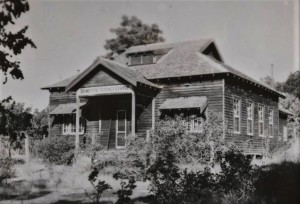
Fig 5: This was the domestic science centre at the Fairbridge Farm School in Western Australia. Girls “rescued” from orphanages in England were thought to need training in domestic science as much as any other subject. SLWA
The pressure towards home economics as a school subject for girls and career for women was also strong in North America and the United Kingdom. It was a transnational movement that promised a revolution in the education of girls, initially in the primary school, and later in secondary schools and beyond. In 1908 an International Federation for Home Economics was founded, a strong indication of the subject’s transnational character and growing strength.
Victoria saw a College of Domestic Economy open in 1906, and from 1911 it became the training centre for domestic arts teachers for Victorian public schools. In 1927 the Emily McPherson College of Domestic Economy was established in Melbourne, fifty years later becoming part of the Royal Melbourne Institute of Technology. Originally the college offered diploma courses for teachers of home economics and dressmaking, and training for the hospitality and clothing industries.

Fig 6: Domestic science class learning to clean a house. North Sydney Continuation School, 1930s. State Library of New South Wales
In the process of introducing the new curriculum into schools, “centres” were often established. With the new curriculum going beyond sewing, into cooking and nutrition, cleaning and cleanliness (hygiene), the equipment required to teach the new subject was beyond the resources of individual primary schools. “Centres” could be attached to the developing public high schools. Girls from nearby schools might visit the centres for instruction, often once weekly or fortnightly.
In World War I the home economics centres, their teachers and students were quickly recruited into supporting soldiers with knitted scarves, socks and other garments, cooking for fetes designed to raise funds for the war, and later, as at the Unley High School centre in South Australia, teaching and learning invalid cookery, to support the men who returned from war in damaged condition.

Fig 7: Emily McPherson College building, Melbourne. Source: RMIT
Home economics centres required specialist teachers. Courses were increasingly offered in the teachers’ and technical colleges to train and educate in home economics. The Emily McPherson College of Domestic Economy was for many years the only institution in Victoria offering courses in domestic economy, cookery and dress making. A Western Australian equivalent was founded in 1941. The attempt to link home economics to science, for example the chemistry associated with good nutrition, and the new field of management, the efficient running of the home, was an argument that sought to elevate the subject beyond cooking, laundry and needlework.
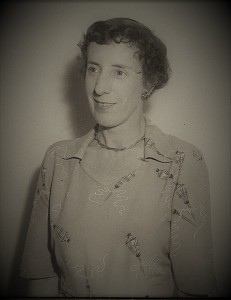
Fig 8: The new headmistress of the Home Science High School, Newcastle, Miss Aileen Treglown. 1954. SLNSW.
In the process, a new career path was being invented for women who had long been subordinated to men in public schools. Not only were specialist teachers required, but managers of centres and inspectors also. This process is an example of the professionalisation of a workforce in a new curriculum domain. The South Australian career of Edith Devitt, a pioneer of modern home economics teaching provides an example of the strong linkage of a developing curriculum with first wave feminism. (See Whitehead & Trethewey, 2001.) In several colonies and states the teachers of home economics established associations to further professional development and represent their interests. In Western Australia, the Home Management Teachers’ Association was founded in 1909. Its name changed over the years, but as often occurred in other Australian states, it was an association affiliated to the public teachers union.
The emergence of the home economics profession not only led to the demand for specialist colleges but university training, a new female professoriate and degrees, including postgraduate study opportunities for graduates. In 1925, the University of Sydney introduced a Batchelor of Science degree in Domestic Science, but until 1945 when it was discontinued, there were only two graduates. Training and education (with lower status) would occur elsewhere. The courses in the technical colleges did not require university matriculation for entry.
Until well into the twentieth century very few women had access to scientific careers. “Household science” was an area that women could inhabit as academics, teachers and later nutritional scientists, for example. In part, the field of child development also grew out of home science from 1920s, initially in the United States. Women who developed careers in the field might become eligible for grants, including Fulbright and Carnegie, that enabled travel and study abroad, especially from the 1940s.
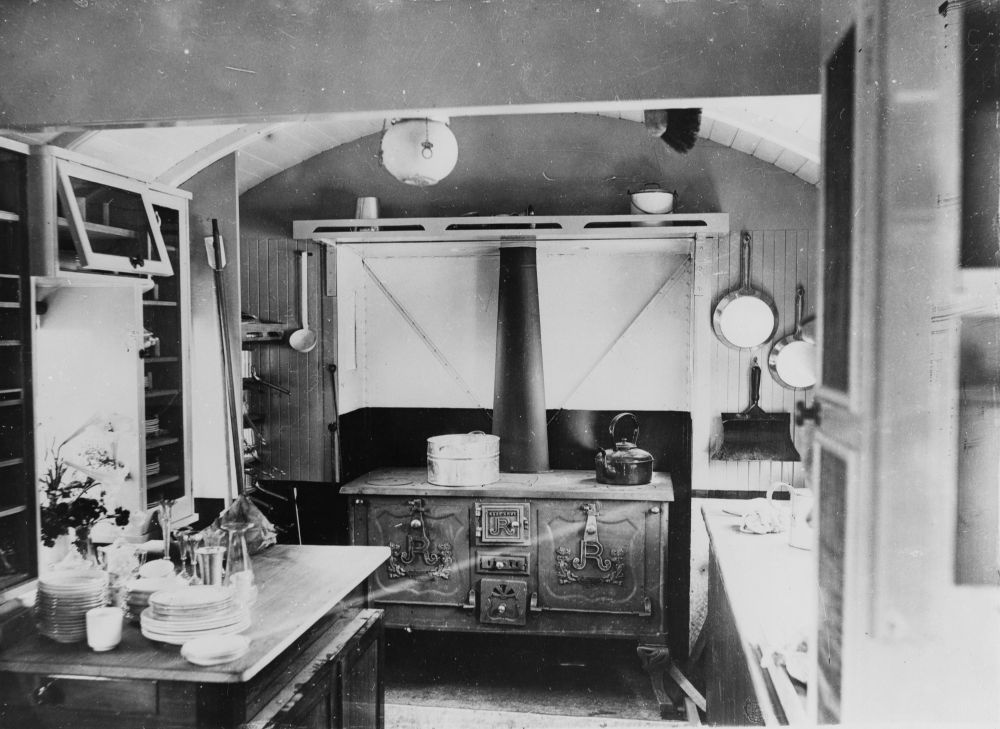
Fig 9: Taking home science to rural Queensland. From the 1920s to 1967 there were railway carriages equipped for teaching. State Library of Queensland.
Home economics as a subject for girls was not universally supported. Many of the ruling and middle class private and church secondary schools for girls resisted the new curriculum. Certainly, many parents did. By the early twentieth century, many of these nongovernment schools held that girls should be offered much the same academic curriculum as boys, enabling accessibility to public examination credentials and possible university matriculation. While elements of the older accomplishments curriculum survived in such schools, home economics was often ill-regarded. Girls should not be diverted from the general/academic curriculum. In the academically oriented public high schools, home economics might be made compulsory in the junior years but became an elective in the senior or not taught at all.
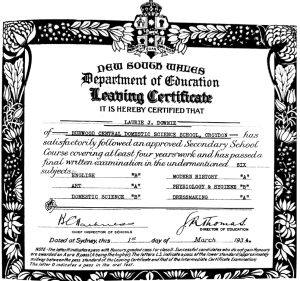
Fig 10: Certification at Leaving standard in Home Economics. New South Wales. Source: Peacock, 1982
Where home economics became a publicly examinable subject for the Intermediate and Leaving examinations, Australian universities either refused to accept the subject for the purpose of matriculation or refused to allocate the same value to the subject as the academic subjects.
Home economics became a more significant curriculum for the girls’ junior technical, central, and domestic or home science schools that were founded from the early twentieth century in most Australian states. Generally, the home economics courses in these schools were terminal in nature, that is, they did not easily lead to further education opportunities.
Home economics became the central curriculum for Aboriginal girls in many institutions. In 1941 for example, a Domestic Science building was specially constructed at the Cherbourg Aboriginal settlement (Queensland) and the comprehensive teaching of domestic science was developed there.

Fig 11: Domestic science at the Cherbourg Aboriginal Settlement, 1946. Queensland. Source: Cherbourgmemory.org
There was a common assumption held by many, including Frank Tate, Director of Education in Victoria early in the twentieth century, that domestic science was a subject offering most to less well-off girls, including working class and “less intelligent” girls. (This was an age when intelligence testing became increasingly influential in determining schools and school courses.)
For the girl deemed less intelligent, Domestic Arts education was seen by the professional educationalists as necessary for both her moral and vocational well-being. Her basic career after school was still expected to be that of wife and mother. It was also recognised that she would have to look after herself in the interim. For both of these tasks she was considered to be in need of training. (Matthews p. 47)
At times the subject was promoted as particularly useful for disabled girls. (Peacock, p. 107)

Fig 12: Curriculum in the new Domestic Science course in New South Wales. 1910s. Source: Peacock (1982)
In New South Wales, home economics, including subjects like cookery, home management and household hygiene, had entered superior public and evening continuation schools from 1913. Central Domestic Science Schools offering three-year courses for post-primary girls were founded from 1923. The early twentieth century was the period when home economics was most likely to enter public school curricula as a compulsory subject for girls, with time spent on the rest of the curriculum necessarily reduced. There were plenty of supporters for the new domestication of the curriculum for girls, not only from the significant male reformers, Knibbs and Turner, and Peter Board, early in the century. As the historian Noeline Kyle pointed out, there was reactionary as well as progressive pressure towards home economics.
the move to place women more firmly in the home occurred at a time when working class and lower middle class girls were moving into a wider range of commercial, professional and industrial employment … the move to increase domestic science education for girls can be viewed as a reactionary response to the widening socio-economic horizons of many women after 1900 and women’s rejection of the imposition of domestic service as a favoured occupation and the domestic education which supposedly better prepared them for it. (Kyle, p. 119.)
For many girls and their families, the commercial courses, including subjects such as typing, shorthand and bookkeeping were seen as offering superior opportunities for employment than home economics.
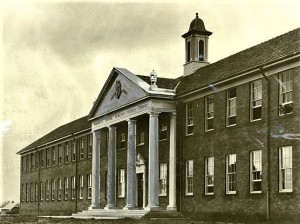
Fig 13: A grand school for a grand mission. Paramatta Central Domestic Science School, 1930-1957. State Archives NSW.
In New South Wales there were two home science high schools established in the 1930s, with five-year courses. Most girls enrolled in public secondary schools were taught domestic science. With universal secondary education, at least in the junior years, primary schools were no longer required to teach the subject although in South Australia and New South Wales, the old subject, sewing, persisted in the primary schools until the 1960s. In South Australia, all women teachers had to teach sewing not only to the girls in their own classes, but those of their male colleagues. Already underpaid in comparison with male teachers, this addition to women’s workload was a source of tension.
In the late 1950s there was a substantial investment in the future of home economics nationally.
In the belief that Australian family life ought to be strengthened and supported for the sake of the nation, and having no living relatives, King and Amy O’Malley directed that the capital and accumulated interest from their estates be used to establish the King and Amy O’Malley Trust Fund and specified that the monies from the Fund were to be used to provide financial assistance to students undertaking studies in Home Economics. (See https://omalleytrust.org.au/)
King O’Malley and his wife Amy were socially progressive, and the ideals of home economics in its pre-1960s formulations inspired their philanthropy. The welfare of the nation was conceived as reliant on the quality of family life.
From the late1950s in New South Wales, and usually some years later elsewhere, the home science schools were replaced with junior or comprehensive high schools. The Wyndham Scheme introduced in the 1960s completed the process.
The home economics curriculum for girls survived these school reforms usually remaining as a compulsory subject in the junior secondary years (with considerable support from mothers). Despite the support, by the 1940s and 1950s, in both Victoria and New South Wales there was a gradual but steady decline in home economics enrolments where girls and their families were able to choose schools and courses. Block timetabling (running several lessons together into a “block” of time) certainly assisted teaching of home economics and manual arts for boys, but it often had a negative effect on access to and timetabling other secondary school subjects. In many schools it remained difficult for girls to access mathematics and the sciences.
By the early 1960s there were significant numbers of home economics teachers, and curriculum that was well-supported in many schools and beyond. However, a disruption was not far away. It came with the new feminism from the late 1960s. The early twentieth century social ideal, that Australian families would be headed by male breadwinners supporting dependent, stay-at-home, wives, mothers and children was challenged, with radical consequences for home economics as a school subject.
1970 to 2010
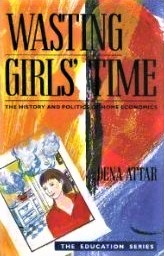 The renewed feminist movement of the late 1960s and 1970s, unlike that of the 1890s and early 1900s was often critical of home economics as a subject restricted to girls. The criticisms varied, but they included the following:
The renewed feminist movement of the late 1960s and 1970s, unlike that of the 1890s and early 1900s was often critical of home economics as a subject restricted to girls. The criticisms varied, but they included the following:
- girls’ educational opportunities were impaired by side-lining them from the academic curriculum, and
- the subject reinforced a widespread social assumption that girls would occupy subordinate roles in families and society, primarily as ‘home-makers’.
The subject was represented as a reinforcement of sex inequality, sexism and patriarchal power through the schooling of girls. The Schools Commission report of 1975, Girls, School and Society, had this to say:
The sex typed subjects such as Domestic Science and Woodwork are merely the ‘tip of the iceberg’ on any analysis of sexism in the curriculum (p. 81).
This report argued that the problem was consolidated by the low status of the sex-specific subjects such as home economics in school curricula. A much later report for the Australian government, Private lives and public domains, summarised the arguments arising from the women’s movement:
home economics has been, still is, instrumental in the oppression of women in the home; is still engaged in romanticising homemaking and committed to ensuring women continue to take on primary responsibility for household and child-care tasks. (Smit, 1992, p. 5.)
Earlier, in 1990, the title of the book Wasting girls’ time: The history and politics of home economics also summarised the negative case. (Attar, 1990).

Fig 14: Girls at metal work, boys cooking in Home Economics. The early reform wave. Unley High School in South Australia, 1983. UHS School Magazine.
There was a substantial defence to these feminist criticisms of home economics, especially from the teachers of home economics. They quite rightly saw their contribution to the teaching of good nutrition, hygiene, child-rearing and so on, as a crucially important contribution not only to the welfare of individuals and families, but in providing employment skills and training. Nevertheless, there was a growing acceptance that reform was required if the curriculum was to survive. An early move in many schools was to make the subject gender-inclusive, boys were to study it, and girls would experience “technical studies”, previously restricted to boys. (This occurred in 1969 in Western Australia.) Where home economics became an option, with access available to boys, it almost always remained a subject taken mostly by girls.
There was an angrier, more conservative response to new feminist criticisms of home economics. Some women argued that the new feminism, including attacks on home economics, demeaned women who chose full-time and traditional roles in families as wives and mothers.
Articles in the Journal of the Home Economics Association of Australia (JHEAA) during the 1970s amply illustrate the struggles to defend and reform the subject, within and beyond the home economics curriculum and profession. One author in the journal, argued that for home economics “the badge of sex-role stereotyping has proven injurious and in some cases fatal”. (Royston J. Lawson in JHEAA, 25:4, 1993, p. 124.)
Home Economics survived the 1970s and 1980s turmoil but traditional approaches to its content, teaching and place in school curricula changed. The training of teachers in the area was reformed. If not always named as “home economics”, associated subjects and education developed in the Technical and Further Education sector, as well as many of the Colleges of Advanced Education that were eventually absorbed into, or became, universities. For example, a new Bachelor of Education offered at the Sydney CAE allowed Nutritional Biochemistry and Textiles Science as subjects in the science courses, graduates being qualified to teach Home Science and Textiles and Design in secondary schools.
This 1970s to 1990s period saw major reform in secondary school curricula and the credentials they supported. The move was towards curricula that were more “inclusive”, that is, allowing substantially greater numbers of young people to achieve final school credentials of worth in subjects that went beyond the academic subjects, those that universities had traditionally required for their purposes. In the process, home economics often became more than one subject, and the vocational and skills training associated with its reformed curricula won general acceptance.
Catering, hospitality, textiles, food preparation, child rearing and similar could be developed as vocationally-oriented courses in schools and technical and further education institutions, and elsewhere. The possible relevance of home economics in the emerging field of “personal development” was also explored. The following chart represents the relevance of home economics to emerging twenty-first century subjects and skills in schools and beyond.
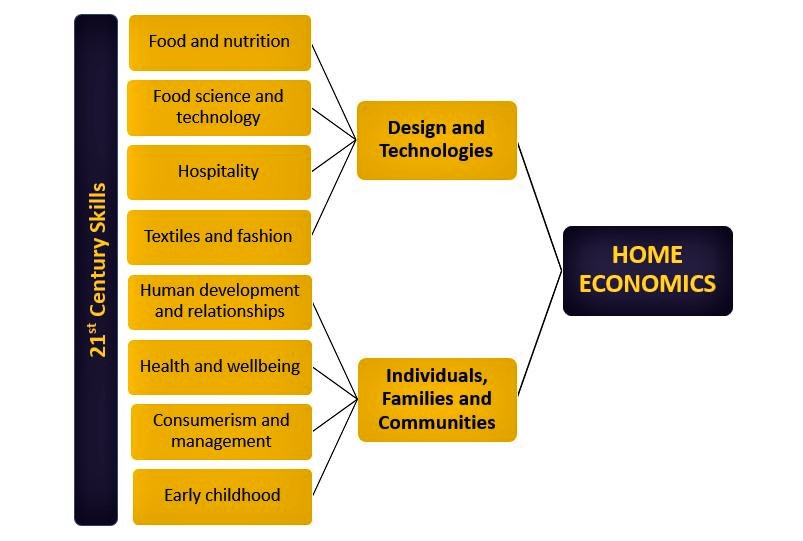
Fig 15: Home Economics as a multi-disciplinary subject domain. Chart courtesy of the Home Economics Institute of Australia.
As part of the renewal, in 1993 the Home Economics Institute of Australia emerged from earlier organisations. It provided a
national focus for home economics and home economists working in education, community health and industry. HEIA cooperates and affiliates with bodies at a state, national and international level concerned with the education of, and advocacy for, families and households in everyday living. HEIA promotes public recognition of the role of home economists, sets professional standards for the practice of home economics and promotes the professional standing of home economists”. (https://heia.com.au/, 6 April 2022.)
Conclusion
In 2021 there was a new history of home economics published in the United States. It had a very different focus from the older Wasting girls’ time (Attar, 1990). Its subtitle was: How trailblazing women harnessed the power of home and changed the way we live (Dreilinger, 2021). The argument sought to restore a denigrated subject to its rightful importance. It reminded readers that everyone should learn how to cook a meal, balance their budgets, and fight for a better world! A stronger argument was made in Australia by Donna Pendergast (2001) that home economists, in education or elsewhere, had continually to re-invent the subject, that there were great opportunities for positive interventions and new relevance as accelerating social and educational change continued into the twenty-first century.
The home economics story demonstrates how curriculum initiatives may occur as a response to perceived national and social problems. It provides a good example of a process by which a progressive, and innovative curriculum in one era may become a residual curriculum, encompassing the ideals of a past age, in another. For home economics, the challenge was to reform, adapt, or disappear. The challenge was not only about a subject or knowledge domain, but the future of professionally educated teachers and home economists. In the case of home economics, the process of adaptation and reform appears to have been successful.
NOTE: The author thanks Jenny Collins, Kay Whitehead and Beth Marsden for their advice in the writing of this entry.
